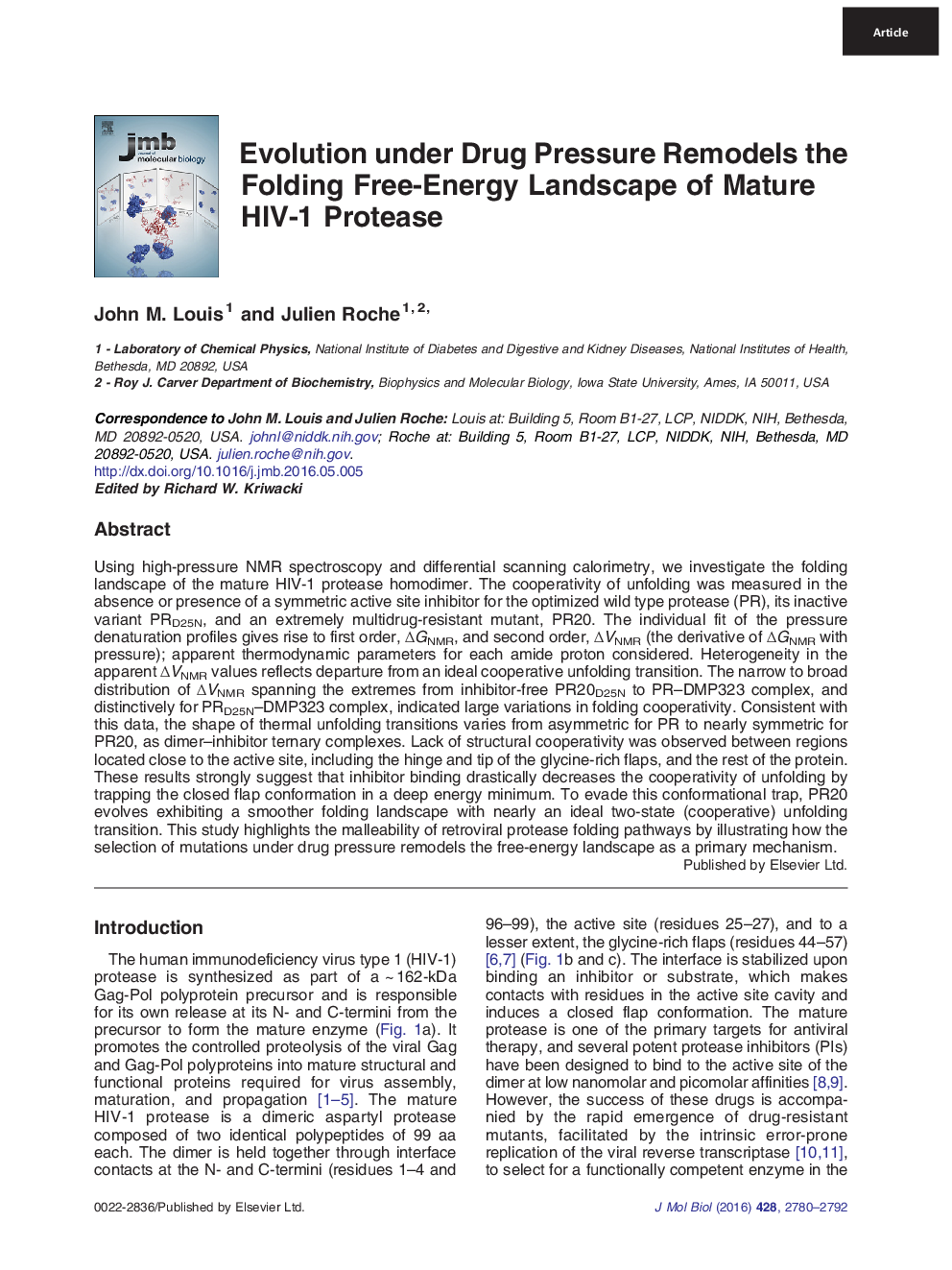| کد مقاله | کد نشریه | سال انتشار | مقاله انگلیسی | نسخه تمام متن |
|---|---|---|---|---|
| 2184309 | 1095826 | 2016 | 13 صفحه PDF | دانلود رایگان |

• Drug resistance mutations affect the folding landscape of the mature HIV-1 protease.
• The unfolding of the protease under pressure is fully reversible.
• Binding of inhibitor decreases the folding cooperativity of the protease dimer.
• The multidrug-resistant PR20 exhibits a nearly ideal two-state unfolding transition.
• Selection of drug resistance accounts for optimal folding and function.
Using high-pressure NMR spectroscopy and differential scanning calorimetry, we investigate the folding landscape of the mature HIV-1 protease homodimer. The cooperativity of unfolding was measured in the absence or presence of a symmetric active site inhibitor for the optimized wild type protease (PR), its inactive variant PRD25N, and an extremely multidrug-resistant mutant, PR20. The individual fit of the pressure denaturation profiles gives rise to first order, ∆GNMR, and second order, ∆VNMR (the derivative of ∆GNMR with pressure); apparent thermodynamic parameters for each amide proton considered. Heterogeneity in the apparent ∆VNMR values reflects departure from an ideal cooperative unfolding transition. The narrow to broad distribution of ∆VNMR spanning the extremes from inhibitor-free PR20D25N to PR–DMP323 complex, and distinctively for PRD25N–DMP323 complex, indicated large variations in folding cooperativity. Consistent with this data, the shape of thermal unfolding transitions varies from asymmetric for PR to nearly symmetric for PR20, as dimer–inhibitor ternary complexes. Lack of structural cooperativity was observed between regions located close to the active site, including the hinge and tip of the glycine-rich flaps, and the rest of the protein. These results strongly suggest that inhibitor binding drastically decreases the cooperativity of unfolding by trapping the closed flap conformation in a deep energy minimum. To evade this conformational trap, PR20 evolves exhibiting a smoother folding landscape with nearly an ideal two-state (cooperative) unfolding transition. This study highlights the malleability of retroviral protease folding pathways by illustrating how the selection of mutations under drug pressure remodels the free-energy landscape as a primary mechanism.
Graphical AbstractFigure optionsDownload high-quality image (120 K)Download as PowerPoint slide
Journal: Journal of Molecular Biology - Volume 428, Issue 13, 3 July 2016, Pages 2780–2792